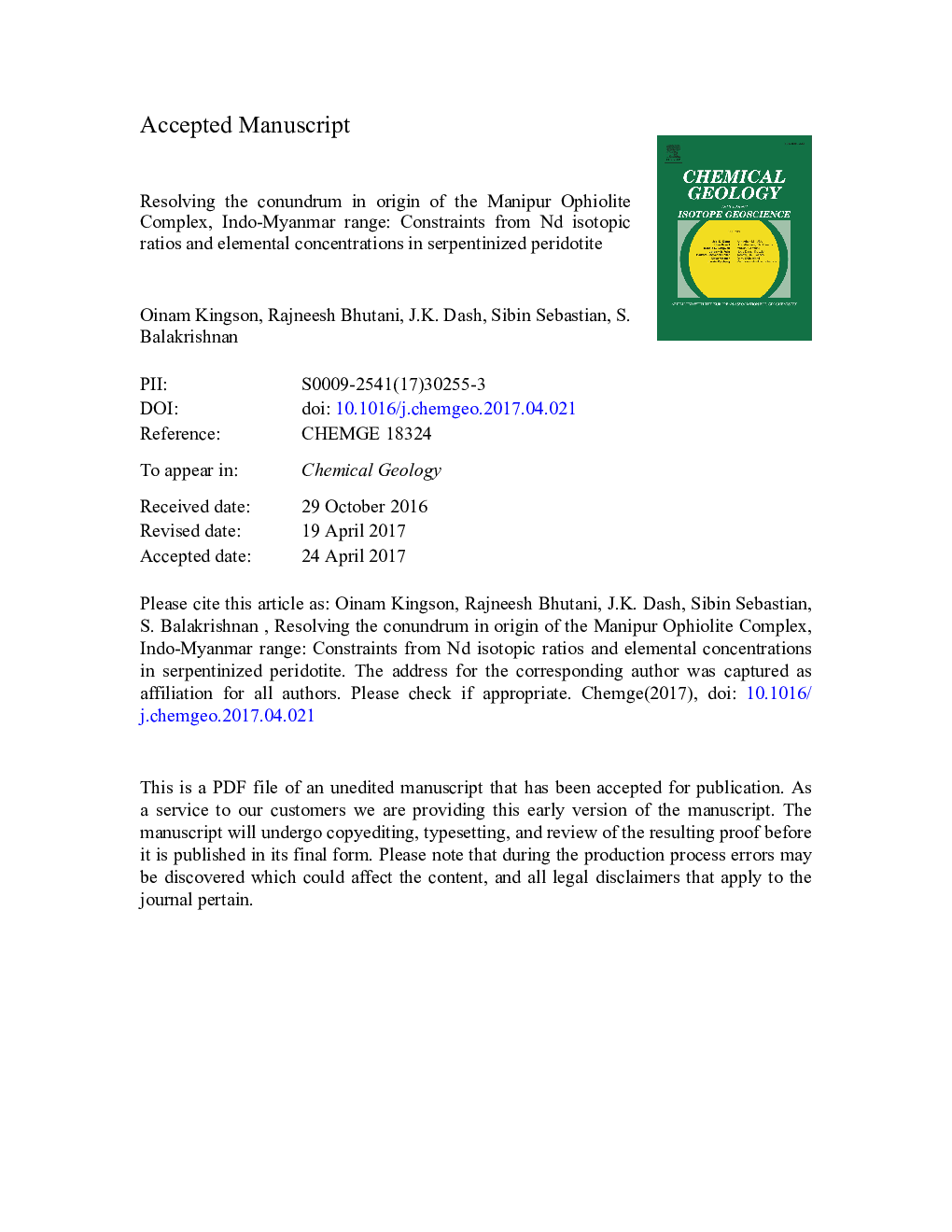| Article ID | Journal | Published Year | Pages | File Type |
|---|---|---|---|---|
| 5782705 | Chemical Geology | 2017 | 49 Pages |
Abstract
Major, trace and rare earth element (REE) abundances along with Nd isotopic ratios are measured in serpentinized peridotite samples from the Manipur Ophiolite Complex (MOC), Indo-Myanmar range (IMR). An attempt is made to resolve the conundrum caused by apparently contradictory petrogenetic models and tectonic settings reported in literature. Nd isotope ratios, reported for the first time, range from â 7.6 to + 10.4 in epsilon units in the whole-rock samples of serpentinized harzburgite and lherzolite. Variation of La/Yb with εNdt is consistent with the progressive addition of a subduction derived fluid to a depleted mantle source. Literature data from the mafic extrusive, intrusive and ultramafic rocks together with new data generated during this study can be explained by a two stage petrogenetic model. Non-modal dynamic melting in the mantle-wedge subsequent to the mixing of fluids derived from the subducted slab explains the observed range of elemental abundances in the MOC mafic and ultramafic rocks. This model also explains the observed variability of Nb and Th in the mafic rocks without invoking different sources for the different types of rocks. Taking into account field, petrographic and geochemical evidences, we propose, that MOC comprises a buoyant fore-arc-mantle-wedge system along with the subducted slab that was obducted during the terminal stage of subduction of the Neotethys below the Burmese plate.
Related Topics
Physical Sciences and Engineering
Earth and Planetary Sciences
Geochemistry and Petrology
Authors
Oinam Kingson, Rajneesh Bhutani, J.K. Dash, Sibin Sebastian, S. Balakrishnan,
